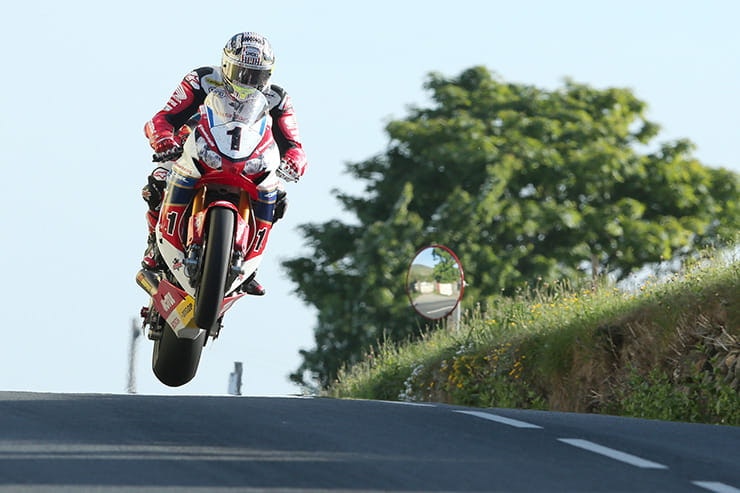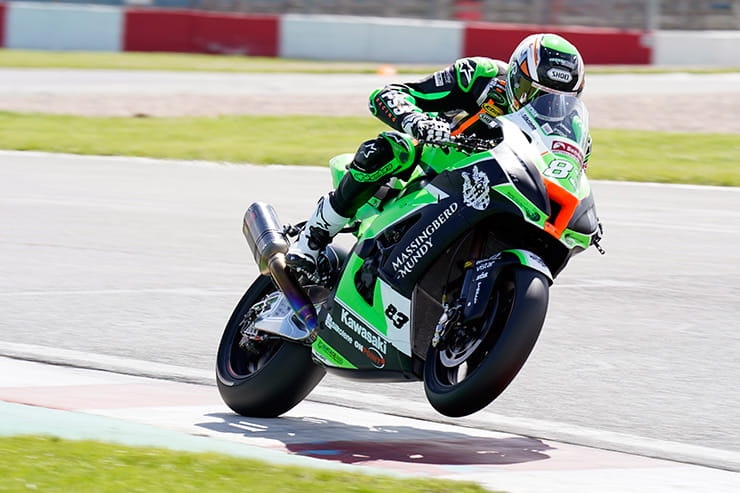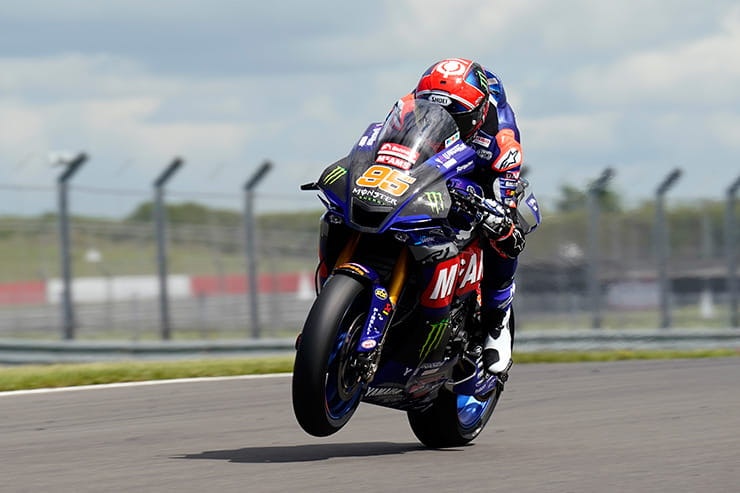Weight watchers - How much does weight really matter in racing?
BikeSocial Road Tester
18.11.2020
Weight Watchers - how much does the weight of a motorbike really matter?
Manufacturers spend a fortune saving weight on each new model they produce. Almost every time a new bike is launched at a glitzy event, one of the key messages is how much lighter it is than before. And it’s not just sport bikes; take Yamaha’s new MT-09 for 2021, for example, which is now 1.7kg lighter than the previous version.
We can’t point the finger at just Yamaha either, all manufacturers claim their new model to be lighter than the previous one, saving precious kilograms with new materials and design. Over the years, alloy has replaced steel, carbon has replaced plastic, components like headlights, sub-frames, brackets have all been shaved, saving yet more grams.
It doesn’t stop there. The aftermarket has an abundance of weight saving accessories, too: lighter wheels, brake calipers, batteries, carbon accessories, titanium bolts and, more obviously, dedicated race exhausts, which can save 2-6kg alone by removing the standard and heavy catalytic converter.
There is also a very simple and inexpensive way to save weight which is often overlooked, and that is the rider. Pile on a few kilos over Christmas, and all that hard work Akrapovic has done to save you weight with a lighter titanium exhaust is thrown out of the window.
But what does all this weight saving mean? Is 5kg equivalent to 5bhp? Can you feel the difference? To quote the great Colin Chapman, the genius engineer behind Lotus and multiple F1 world championships, “Adding power makes you faster on the straights; subtracting weight makes you faster everywhere.”
There are cynics and online ‘experts’ who will tell you weight doesn’t matter but, trust me, it does. If I were to increase the weight of your wheels by 1kg per wheel, you would feel the difference. If I were to double the weight of the conrods in your engine, it would rev slower and produce less power and torque and you would be the first to notice. Hold a bag of sugar at arm’s length for as long as possible. Then perform the same experiment with the bag half empty – yes, weight matters.
Feeling the benefits of reducing weight depends on the bike, where and how you ride, and where the weight benefit is applied. But even on BMW’s mighty R18, which tops the scales at 345kg, you would notice a 5% increase in its mass, especially if it were added to unsprung components, like wheels and brakes.
In racing, weight is critical, not only because it affects performance and handling, but also tyre degradation and fuel consumption. Smaller riders like three times world champion Dani Pedrosa, who’s 51kg and 5ft 2in, have a weight advantage, meaning they can brake later and accelerate faster because their total mass (bike plus rider) is less. In theory, he should be easier on the tyres and use less fuel too – but even some light riders are heavy on the throttle and tyres so this doesn’t always equate.
MotoGP regulations impose a minimum weight limit for rider and bike. In Moto3 it is 152kg, so a light rider on a small ‘low power’ bike has a big advantage over a heavier rider on the same machine. As the size of the bike and power increase that advantage diminishes. This is why larger riders always struggle on small bikes; when was the last time you saw a tall or large Moto2 or Supersport 600 rider?
But away from MotoGP and powerful bikes on perfectly smooth tracks, I’ve witnessed a flip side where weight can be an advantage – and that’s road racing in general and more specifically the Isle of Man TT. Some of the most successful racers on superbikes at the TT have been larger folk like John McGuinness, David Jefferies, and Michael Dunlop even though the same laws of physics apply. McGuinness should accelerate slower, have a longer stopping distance and use more fuel than a lighter rider like tiny 600 TT race winner Lee Johnston, but out in the bumps and lumps of the Mountain Course that theory doesn’t seem to apply. There is also an argument that a heavier rider has an advantage in the wet.
Danny Buchan: British Superbike race winner, and one of the tallest riders on the grid
Q You must be the tallest and heaviest rider in BSB, is that an advantage or disadvantage?
Danny Buchan I think I’m the tallest at 6ft 3in (or 191cm), but I’m unsure about the heaviest? I’m around 78kg once the season starts. It’s funny because when Scott Redding was in BSB last year, he was actually a bit heavier than me, and we chatted about weight. I’m 78kg, and I’m happy with that. I can go up to 80kg, but that is a little heavy. I could go lighter, to 76kg maybe, which would be an advantage, but then I wouldn’t feel fit and I need to be strong to withstand a crash. At 76kg I would feel I couldn’t pick up a pencil.
Weight has both advantages and disadvantages, and it’s different at BSB compared to WSBK or MotoGP. At tracks like Oulton Park, Cadwell Park and Knockhill I can use my size to get over the bike and stop it wheelie-ing. It’s arguably easier for a larger rider who can throw the bike around, but this is unique to BSB where the tracks undulate and are so physical. You don’t get that in WSBK, not as much.
In the wet I seem to have more grip – more weight helps but it has to be very wet. At Donington this year the track was wet but then started drying out, which was a disadvantage for a heavier rider. I was going well, but as a larger heavier rider I was using the tyre more, which meant I was running out of grip as the track improved. A lighter rider on a drying track on wets is going to have an easier time as they are not using up the tyre.
Q What weight and size would you say is optimal?
It’s hard to say as there are swings and roundabouts. In BSB the nature of the tracks changes from round to round, there are lots of undulations, one weekend is wet and the next is dry, and you need to be physically strong and know that if you crash, you can hopefully get back up again… You don’t want to be fragile. So, I would guess 6ft and around 74kg would be ideal for BSB.
John McGuinness: 23 times TT winner
Q It’s often suggested that a larger and heavier rider will perform better at the TT on a Superbike than a small, light rider. Any thoughts?
John McGuinness It’s a hard one that, as a lot of people say big riders do well at the TT, yet a small rider is faster than a heavier rider, that is just a fact. Racing in the Ducati Tri Options Cup in the British Superbike Championship I can see that. Some of the riders are just 8 or 9 stone, which is a lot lighter than me. I’m usually in the top 7 on the timing sheet, but sometimes I’m just in the top 15 in the speed traps. We’re on the same bikes, in a one-make series, but I’m down on speed.
But it’s not just weight, you also have to have desire, determination and talent. DJ (David Jefferies, nine-times TT winner) was a big lad but he had so much natural ability, that’s what made him a good rider, he was good. Joey (Dunlop) was little, but he was fast on the Honda when he won in 2000, and that was a big heavy bike. But I guess since 2000 all the big bike winners have been big lads; myself, DJ, Dunlop (Michael). The top lads now are fit, they are not eating pie and chips, but they are tall riders: Hicky (Peter Hickman), Hutchy (Ian Hutchinson) and Hillier (James Hillier). Before 2000, there were a lot of small riders like Robert and Joey Dunlop, Hizzy (Steve Hislop), Foggy (Carl Fogarty), but maybe as the bikes have got faster you need more weight – who knows!
It’s hard to say how much low weight is an advantage or not, you can’t really say scientifically, not around the TT. A happy, talented rider is faster than a miserable light rider. When I hit Bray Hill flat out, I’m not thinking ‘I wish I was a stone lighter’. But weight obviously works in MotoGP as they are all whippets. When was it the last time you saw a big lad, even a tall rider, do well in MotoGP or WSBK?
Tim Seed: electronics and data engineer for McAMS Yamaha British Superbike team
Q You look at data all the time and have a very light rider in Tarran ‘Taz’ Mackenzie, so do you see any advantage?
When talking weight, it’s never that simple and straightforward as it depends on where you add or remove the weight, and if it’s unsprung weight, which makes a massive difference. On the Yamaha BSB bike we’re not on the minimum weight limit, we’re just above, and sometimes it feels like we need to add weight.
A rider’s weight is important, but it can be a disadvantage as well. A larger rider can move his weight around on the bike, move forward to stop it wheelie-ing, for example. Taz is around 10-12kg lighter than Jason O’Halloran, and we can see on acceleration they are about the same, even though Jason is heavier. This is because he can use his body to get over the bike, to control the wheelie. At Snetterton (with its long straight) they will accelerate nearly the same, but then Taz will be faster in a straight line, because he is lighter but also because he has less drag. Taz will also brake later because he is stopping less mass, this is what Einstein proved. Take away the skill of the rider and this is mathematics, stopping less mass from speed is easier than stopping a larger mass using the same force.
On the race bike, in theory, if we did a blind test on both riders, and added half a kilo to the bikes without telling them, they would know. On a road bike it is a little different, it depends on where the weight is, but if you lost 2kg off the bike, you’d feel that. Maybe not so much on the braking and accelerating, as you don’t ride hard on the road, but you would in the handling. A lighter bike would steer differently, behave differently, even just small changes can make a massive difference depending on the bike and where the weight has been added or take from.
Q If you were to add 5-10kg to the race bike, how much slower would that make it?
Again, it’s not that simple. If we had to add the weight, we would add it to an area that wouldn’t make too much difference. We would then change the set-up, fuelling, etc, to compensate. I’d guess we wouldn’t drop that much, maybe 0.1 or 0.2 of a second. Power isn’t a problem; we have enough power. But the extra weight would show at the end of a race, as we’d use more tyre and tyre degradation would be different – the grip would drop off sooner, in theory.
Clive Padgett: owner of Padgett’s Motorcycles, and a successful racer and team owner, both in MotoGP and on the roads
Q You’ve had success with large riders at the TT, but also chose to have smaller riders in MotoGP in the 500 two-stroke era…
All the big riders have always gone fast at the TT, in my opinion, and Lee Johnston is a very talented TT winner, but he won’t win a big bike race because of his size. We ran both Lee and Conor (Cummins, 4 TT podiums) in 2017, and the size difference was almost comical at times, there must be a clear foot between them. The bikes were vastly different, seating, foot-pegs, bars, suspension everything. Lee wasn’t having a great year that year, and Conor was quicker on the big bike. Lee is a fantastic 600 rider but I believe will struggle on a 230bhp bike around the TT against the big lads. The last small rider on a big bike was probably Joey, or Jim Moodie. Jim was small but solid and very strong, like Dunlop today. Weight certainly helps at the TT.
We don’t worry about weight too much on the bike around the TT as the bike needs to be strong. We would add carbon or titanium if needed but brackets, pegs and bars all need to be strong and robust, whereas in MotoGP and on the small bikes its almost the opposite.
With the privateer MotoGP team in the two-stroke era, we always had small riders like John Reynolds and Jamie Robinson because weight is crucial in MotoGP. A smaller rider will always be faster than a big rider because a lighter rider can accelerate faster and stop is less time. Obviously, it depends on the rider but generally speaking, small wins. Saying that, we ran Terry Rymer in 1992 and he finished 6th in the British GP. He was probably the heaviest rider because he was so tall. We also ran Rob McElnea on a Honda RC30, before it was World Superbikes. Rob was a talented rider, but again a big lad who struggled against lighter riders. He struggled on the RC30, so we switched to a Yamaha FZR750 OW01 – it was a physically bigger bike, which Rob clicked with and got some amazing results.
Q How about in the wet, do larger rider have an advantage?
In the wet the larger, heavier rider does have an advantage as they can move around on the bike more and find grip. Moving weight over the rear end finds grip, better than electronics. A clever, bigger rider can use that to an advantage. But it depends on the rider, bike, and weight.
Summary
It’s been hugely interesting to chat with riders, team managers, and technicians about weight, and clearly weight is critical, not just in racing but on road bikes too. Adding or reducing kilos will affect the bike in proportion to the overall weight of the bike, and where you add the weight is also crucial. When a manufacturer claims they have reduced weight by a few KG, it is significant and will change the feeling of bike, while changes to unsprung weight or rotational weight in the engine will have a particularly dramatic effect. In simple terms, it’s easier and faster to move less mass than a heavier mass. However, extra weight isn’t always a bad thing, as 23-time TT winner John McGuinness proves. Generally, though, the biggest and easiest weight saving is the rider… sorry.
Share on social media:


